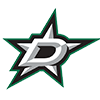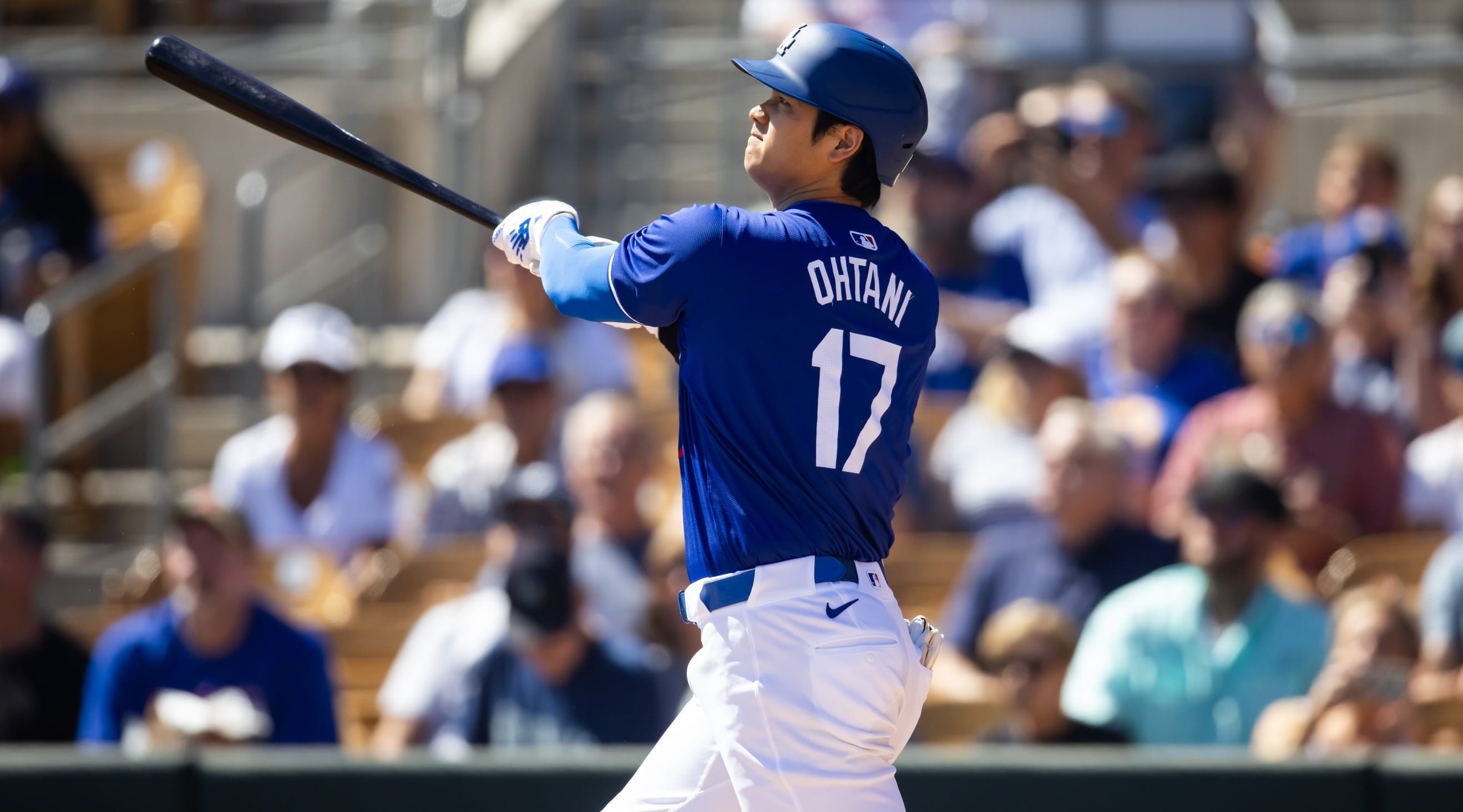Maybe I put too much emphasis in swinging strike rate (swinging strikes divided by number of pitches), but I look at it as a good measure of dominance, and dominance in theory should lead to wins, strikeouts and a low ERA, though clearly that doesn't always happen. Either way, this week we'll look at the pitchers who have shown the greatest swinging strike rate growth in the second half and those who have regressed the most. A lot of these guys won't be on your waiver wire, and most leagues don't allow trades this late in the year, but at least it can help you look to set your weekly lineups and think about 2020.
The Movers
| Name | 1H | 2H | Diff |
| Reynaldo Lopez | 9.9% | 13.0% | 3.1% |
| Kyle Hendricks | 9.4% | 12.2% | 2.8% |
| Lance Lynn | 11.2% | 13.8% | 2.6% |
| Patrick Corbin | 13.3% | 15.6% | 2.3% |
| Gerrit Cole | 15.8% | 18.1% | 2.3% |
| Noah Syndergaard | 11.9% | 14.1% | 2.2% |
| Clayton Kershaw | 11.8% | 13.9% | 2.1% |
| Luis Castillo | 14.9% | 17.0% | 2.1% |
| Marco Gonzales | 7.1% | 9.0% | 1.9% |
| Yu Darvish | 12.2% | 14.1% | 1.9% |
Lopez has to be one of my more frustrating pitchers, probably because I own him in multiple dynasty leagues and formats (Strat even). Case in point, his last two outings:
September 5 at CLE: 9 IP, 1 H, 1 ER, 3 BB, 11 K
August 31 at ATL: 0.2 IP, 6 H, 6 ER, 1 BB, 0 K
Reynaldo Lopez has a 4.18 ERA in his last six starts, which is fine, but in two starts he allowed 5+
Maybe I put too much emphasis in swinging strike rate (swinging strikes divided by number of pitches), but I look at it as a good measure of dominance, and dominance in theory should lead to wins, strikeouts and a low ERA, though clearly that doesn't always happen. Either way, this week we'll look at the pitchers who have shown the greatest swinging strike rate growth in the second half and those who have regressed the most. A lot of these guys won't be on your waiver wire, and most leagues don't allow trades this late in the year, but at least it can help you look to set your weekly lineups and think about 2020.
The Movers
| Name | 1H | 2H | Diff |
| Reynaldo Lopez | 9.9% | 13.0% | 3.1% |
| Kyle Hendricks | 9.4% | 12.2% | 2.8% |
| Lance Lynn | 11.2% | 13.8% | 2.6% |
| Patrick Corbin | 13.3% | 15.6% | 2.3% |
| Gerrit Cole | 15.8% | 18.1% | 2.3% |
| Noah Syndergaard | 11.9% | 14.1% | 2.2% |
| Clayton Kershaw | 11.8% | 13.9% | 2.1% |
| Luis Castillo | 14.9% | 17.0% | 2.1% |
| Marco Gonzales | 7.1% | 9.0% | 1.9% |
| Yu Darvish | 12.2% | 14.1% | 1.9% |
Lopez has to be one of my more frustrating pitchers, probably because I own him in multiple dynasty leagues and formats (Strat even). Case in point, his last two outings:
September 5 at CLE: 9 IP, 1 H, 1 ER, 3 BB, 11 K
August 31 at ATL: 0.2 IP, 6 H, 6 ER, 1 BB, 0 K
Reynaldo Lopez has a 4.18 ERA in his last six starts, which is fine, but in two starts he allowed 5+ ER while in three others, Lopez gave up one or fewer runs. The consistency simply isn't there, and the net result is a 5.17 ERA and 1.42 WHIP across 29 starts. Lopez seemingly broke out last year with a 3.91 ERA, but that also came with a 4.57 FIP, a mark that sits at 4.79 this year. Simply, his ERA in 2018 wasn't completely reflective on how he really pitched.
Kyle Hendricks' FIPs the past three years point to a very consistent pitcher: 3.88, 3.78 and 3.84 this year. He's allowing a few more flyballs this year (36.9 FB percentage vs. 31.6 percent in 2018) than last, but the increase in swinging strikes in the second half is encouraging. His 2016 season (2.13 ERA) is obviously going to be his career year, but the consistency is valuable.
The Rangers took a lot of heat after giving Lynn a three-year $30 million deal coming off a 4.77 ERA in 2018. Who's laughing now? Lynn's 3.81 ERA isn't exactly elite, but he's also put up a 3.12 FIP thanks to career bests in ratios, including a 10.4 K/9 and 2.6 BB/9. A FB percentage that's dropped from 49.7 to 41.2 year over year gives us some pause, but a 94.2 mph average fastball represents the best velocity he's ever shown, and that's reflected in a career-high 12.2 swinging strike percentage. He's going to be a hot trade commodity over the winter.
Patrick Corbin has three starts in which he's allowed 6-plus earned runs, but otherwise, he's been everything the Nationals paid for this winter. Since June 19, Corbin has a 2.29 ERA and 116:31 K:BB in 94.1 innings, and with 210 overall strikeouts, he's at least on track to approach last year's career-high 246. More importantly, this will be Corbin's third consecutive season of 30-plus starts, putting prior health concerns firmly in the rearview mirror.
Not much more we can say about Gerrit Cole, your probable 2019 AL Cy Young winner, though teammate Justin Verlander may certainly make a run this month.
Noah Syndergaard's 4.06 ERA is driven primarily by a 0.98 HR/9, which while not terrible these days, is double the 0.49 mark he recorded from 2016 to 2018. He's still a bit puzzling to me, as for a guy with four plus pitches, including a 97.7 mph average fastball, I'd think we'd see better than a 9.1 K/9 in this day and age of increasing pitcher strikeouts. Syndergaard does have a 9.7 K/9 in his last 11 starts, so he's looking strong to close out the year.
The big thing with Clayton Kershaw this year is that he's been healthy and could make 30 starts for the first time since 2015, though it's September 9 and he still needs an additional five starts. Kershaw's 3.06 ERA would be his worst mark since his abbreviated rookie season, which is amazing, but his 9.7 K/9 is right in line with his career mark, and though we've seen better than a 2.0 BB/9 from him in the past, it's still excellent. The main issue for Kershaw has been home runs (join the club), as his 1.4 HR/9 is close to double his career mark. He may not be a Cy Young contender anymore, but Kershaw is still among the league's best.
Luis Castillo's second-half rate is among the league's elite, and though his 4.66 ERA in that time is not what we'd expect, he's put up an excellent 84:16 K:BB in 67.2 innings since the break. Like many pitchers, home runs (11 of them) have hurt his ERA, but at times, Castillo looks to be a top-10 fantasy pitcher. As of now, he's probably still top-15 headed into 2020 depending on how he finishes this month.
Marco Gonzales has done enough to look like a solid back-end-of-the-rotation guy going forward, but for someone with an 88.9 mph average fastball, there are limitations to his ceiling. It's good that he's generating more swings and misses recently, but nine percent is still well off the 11.1 percent league average.
The Cubs are certainly breathing a sign of relief after they gave Yu Darvish a lucrative $126 million deal prior to last year only to see him pitch just 40 innings last year and start off this year with a 5.40 ERA through May 25. Since then, Darvish has a 3.43 ERA, 0.87 WHIP, 10.8 K/9, and 1.3 BB/9, with (again), only home runs (1.8 HR/9) being the primary issue. All signs point toward Darvish being a top-30 fantasy pitcher the rest of the way.
The Stragglers
| Name | 1H | 2H | Diff |
| Joey Lucchesi | 11.5% | 8.6% | -2.9% |
| Madison Bumgarner | 11.9% | 10.1% | -1.8% |
| Yusei Kikuchi | 9.1% | 7.9% | -1.2% |
| Mike Minor | 11.8% | 10.6% | -1.2% |
| Charlie Morton | 13.1% | 12.1% | -1.0% |
| Masahiro Tanaka | 10.9% | 9.9% | -1.0% |
| Julio Teheran | 9.9% | 9.1% | -0.8% |
| Shane Bieber | 14.5% | 13.7% | -0.8% |
| Jose Quintana | 8.9% | 8.2% | -0.7% |
| Stephen Strasburg | 14.3% | 13.7% | -0.6% |
Joey Lucchesi has struggled at times while looking brilliant in others, but that's what you get in a soft-tossing lefty. An 8.6 percent rate is well below average, so continued inconsistent results wouldn't exactly be surprising. He's probably best deployed as a streaming option right now, as his home/road splits are pretty stark – 2.64 ERA at Petco Park, 5.43 ERA on the road.
After making just 38 starts combined in 2017 and 2018, Madison Bumgarner is already up to 30 this year. Unfortunately, after being hit hard by the Cardinals (5 IP, 6 ER) in his last outing, his ERA is a career-worst 3.81. His 8.9 K/9 and 1.8 BB/9 are both excellent and in line with his career marks, but home runs have been an issue somewhat (1.2 HR/9), and he's struggled quite a bit on the road (5.06 ERA). Bumgarner would fall outside my top-30 SP rankings for 2020, but if he does stay in San Francisco or lands in another favorable location and finishes 2019 strong, he could sneak in on the list.
Yusei Kikuchi's first year stateside hasn't gone well. A bloated 2.1 HR/9 has driven his ERA to 5.24, with a 5.76 FIP to go with it. He's not missing bats (as you see in the above chart), and right-handers are hitting him to the tune of a .293 BA. At this point, the Mariners owe Kikuchi $42 million in guaranteed money after 2019, so they probably aren't anxious to make him a lefty specialist, but he needs to figure things out this winter. FanGraphs doesn't think highly of any of his pitches, grading all below average with the exception of a splitter that he only throws 6.6 percent of the time.
The Rangers have surprisingly done well in the free agent starting pitching market in recent years, inking Mike Minor prior to the 2018 season and Lance Lynn this last winter. They've both been excellent. Minor did have a 4.71 ERA in his first nine starts out of the All-Star break, but he's been excellent in back-to-back starts and should be fine going forward. Minor had a 13.7 percent SwStr percentage in his last start, though it was against the Orioles. Prior to that, Minor had a 9.9 percent mark in seven shutout innings against the Yankees.
Charlie Morton is like a fine wine. He made just four appearances in 2016, so we'll throw that season out, but here's what he's done in recent years:
Year | Age | K/9 | BB/9 |
2015 | 31 | 6.7 | 2.9 |
2017 | 33 | 10.0 | 3.1 |
2018 | 34 | 10.8 | 3.5 |
2019 | 35 | 11.2 | 2.7 |
These items aren't supposed to trend in this direction, but perhaps he thinks he's Randy Johnson reincarnate. He's had some bumpy second-half outings, but even though his ERA sits at 4.52 since the break, he should be fine as evidenced by a 10.9 K/9 and 2.3 BB/9, including four starts with 10-plus strikeouts. Despite the one percent dip in his SwStr percentage, a 12.1 percent mark is still firmly above average.
I'm not a big "if you take out this start, then his ERA would look way better" guy, as you can't just erase starts. Masahiro Tanaka has a 5.66 ERA since the All-Star break, driven in large part by a July 25 outing in Boston (3.1 IP, 12 ER). Take that out and it's a 4.29 ERA. That said, his swing-and-miss ability has seemed to drop precipitously this year as evidenced by the trending in his SwStr percentage in the last three years:
2017 – 15.1%
2018 – 14.1%
2019 – 10.5%
He's probably still safe to use, with the exception of any week in which he's facing the Red Sox, who seem to see the ball very well out of his hand. In three starts against Boston this year, Tanaka has a 24.75 ERA, allowing an amazing 24 hits and 22 runs with a 6:5 K:BB.
The trend in Julio Teheran's BB/9 rates the past four years is below average – 2.0, 3.4, 4.3, 4.2. He does have a 2.59 ERA since the ASB, including a 1.08 mark in his last four. Teheran also has a 9.0 K/9 in the second half, though clearly his swinging strike rate is below league average. That makes me a bit concerned that we'll see a couple starts like we saw June 18 and 24 (8 IP, 13 ER). Despite the shaky control however, Teheran should be a weekly starter, as he is supported by a strong offense.
Shane Bieber isn't an overly hard thrower (93.2 mph average fastball), but elite control and command have allowed him to post a strong 11.1 K/9. Sure, he's averaging a few less swings-and-misses in the second half, but he's still managed a 2.95 ERA and 10.8 K/9. Bieber is one of only three pitchers (Justin Verlander, Mike Minor) to average 6.5 or more innings a start, and there's a lot of value in that. My top four starting pitchers in some order for 2020 would probably be Verlander, Max Scherzer, Jacob deGrom and Gerrit Cole, but right now he's in the mix for a top-five slot.
Not too worried about Stephen Strasburg's drop in swinging strikes, as after an ugly August 3 outing in Arizona (4.2 IP, 9 ER), he's recovered nicely, particularly in his last four starts (1.67 ERA, 0.78 WHIP, 12.3 K/9, 2.0 BB/9). Barring a September injury, Strasburg is going to top 30 starts and 200 innings for the first time since 2014.






















